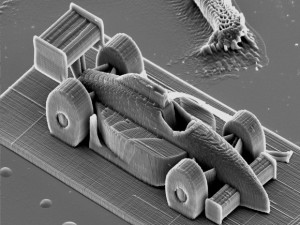CNTs are again a popular subject for predicting doom if they continue to be applied in products. The article that started the line of thought in last week’s blog, has been circulating again in the form of “latest” news announcements. The contention is that CNTs are similar in shape to asbestos and therefore will have the same damaging effect as asbestos. The experiments that have been run incorporate specially constructed CNTs that are many times longer than typical CNTs and are overdosed. It is not surprising that the material, which has been made longer than the size that the human body can accommodate resulted in issues.
If we are able to generalize outcomes for a material from unnatural sizes or states, then why not consider the ability of a meter long CNT. The first response is that is not way we can make them. But 20 micrometer long CNTs are not the normal way CNTs are manufactured. Is it surprising that we are able to create a material in such a configuration that it mimics another material, in this case asbestos, and causes reactions that are similar to the material that it mimics?
Elsewhere, there are also some concerns raised about graphene, which is basically an unrolled CNT. The concern that was raised is that graphene, as a two-dimensional material, would be able to cut through cells with very little effort. Consequently, it was suggested that graphene be considered a dangerous material. Really? Where is the data?
There are many issues that are being “floated” in the public view. The CNT “work” provides for some lively discussions, but there is a very fundamental point that is being missed. The process of manufacturing CNT almost always involves a catalyst. Another portion of the process is the etching away of the catalyst. The end result of the manufacturing process is a quantity of CNTs. However, these are a mixture of single wall and multi-wall CNTs. The single wall CNTs can be conducting or semiconducting. So there is probably a wide range of different types of CNTs that are being employed for the experiments, but there is not any detail of the specific type of CNT. Do we know how many CNTs strands are required to create the observed reaction?
Why is this important? Medical studies can provide information, but often times it is impossible to determine if the observed effect is from the central point of the distribution or a small portion of the tail of the distribution. Very often, we do not have the capabilities of measuring/determining the exact makeup of the distribution.
If there is a problem detected due to a CNT, is it due to the CNT, or the catalyst, or the chemical residue from the catalyst removal process? Is it due to single wall or multi-wall CNTs? If both, what is the distribution? If single wall CNTs, is it the conductive or the semi conductive variety? If we do not know, how can we state that the entire class of CNTs can be clumped together? One problem is that we do not have equipment that can sufficiently characterize these distributions. These facts question the credibility of the pronouncements of danger from various nanomaterials. We need all the facts before making definitive statements. The examination of the facts with all the details is required before a proper answer can be determined.





